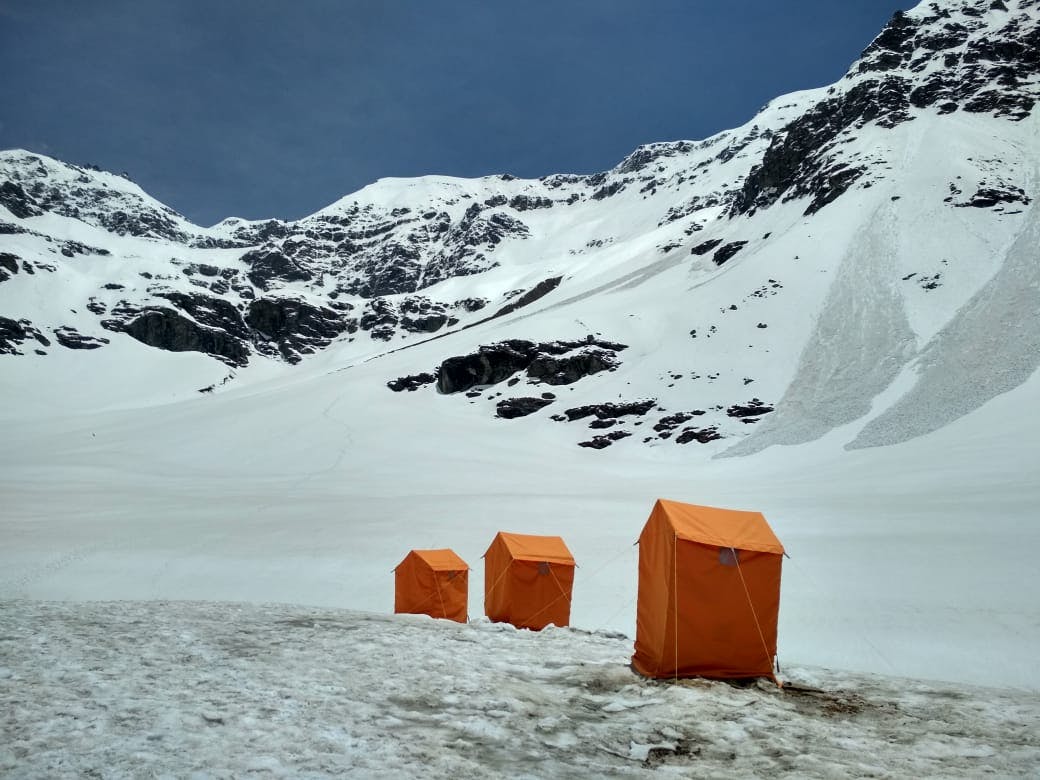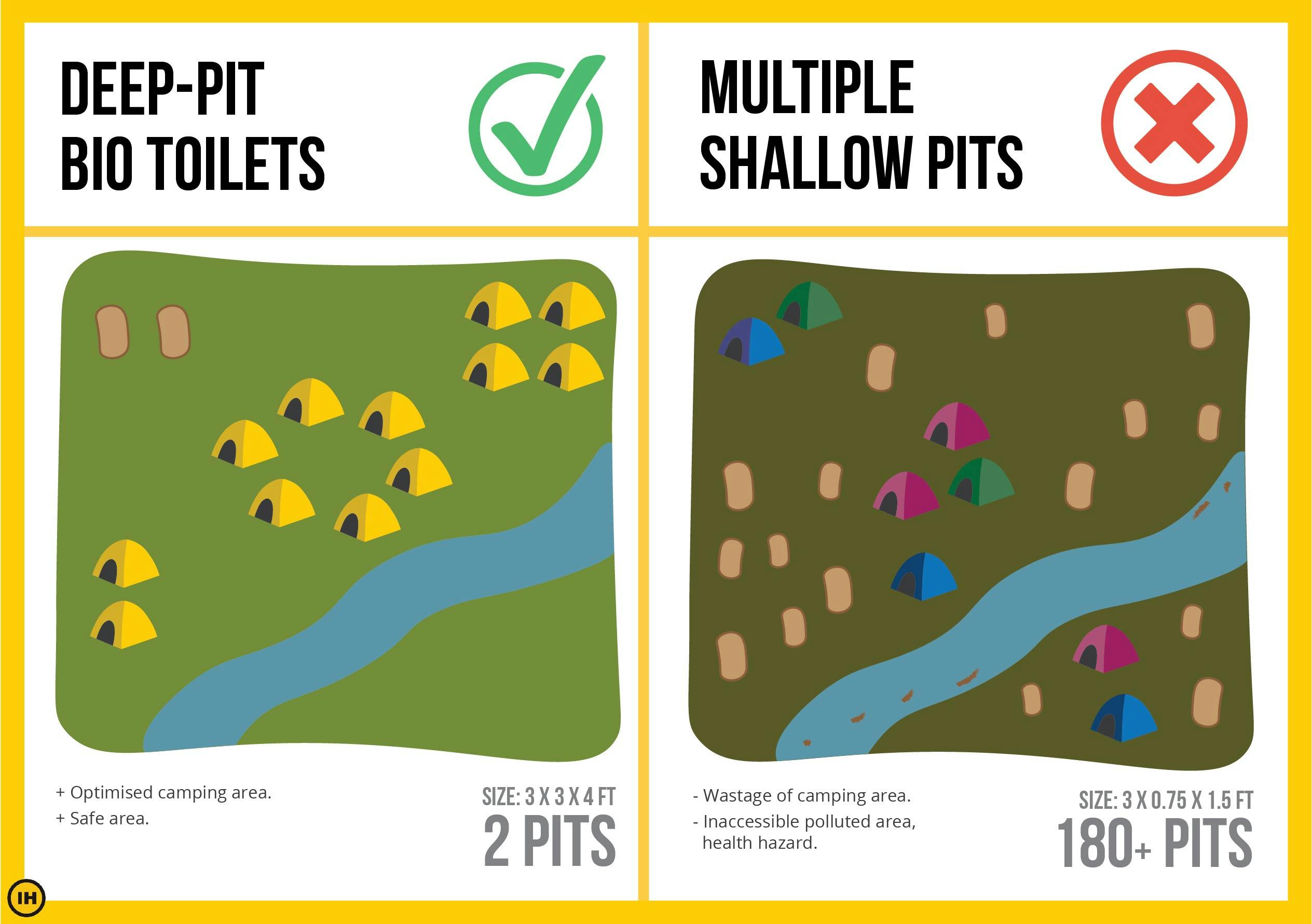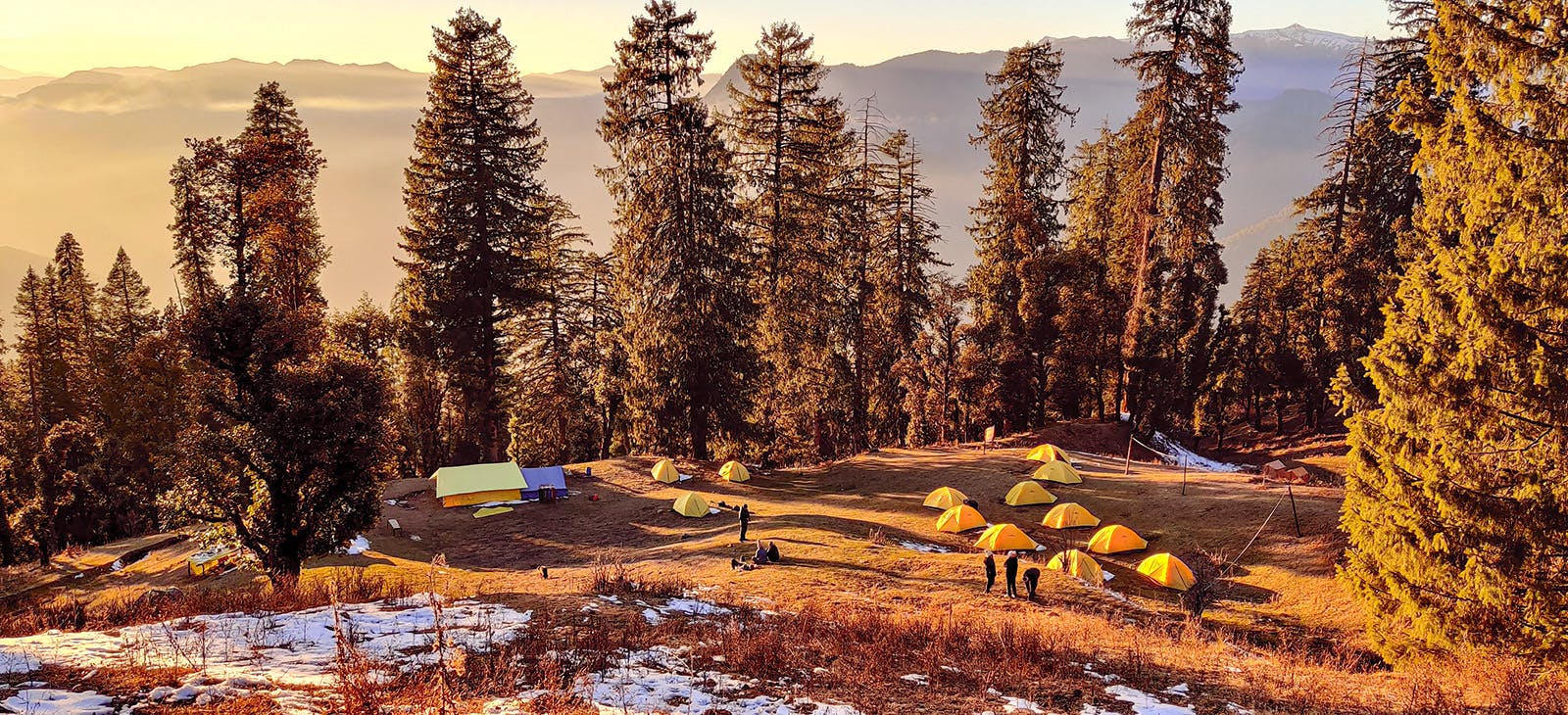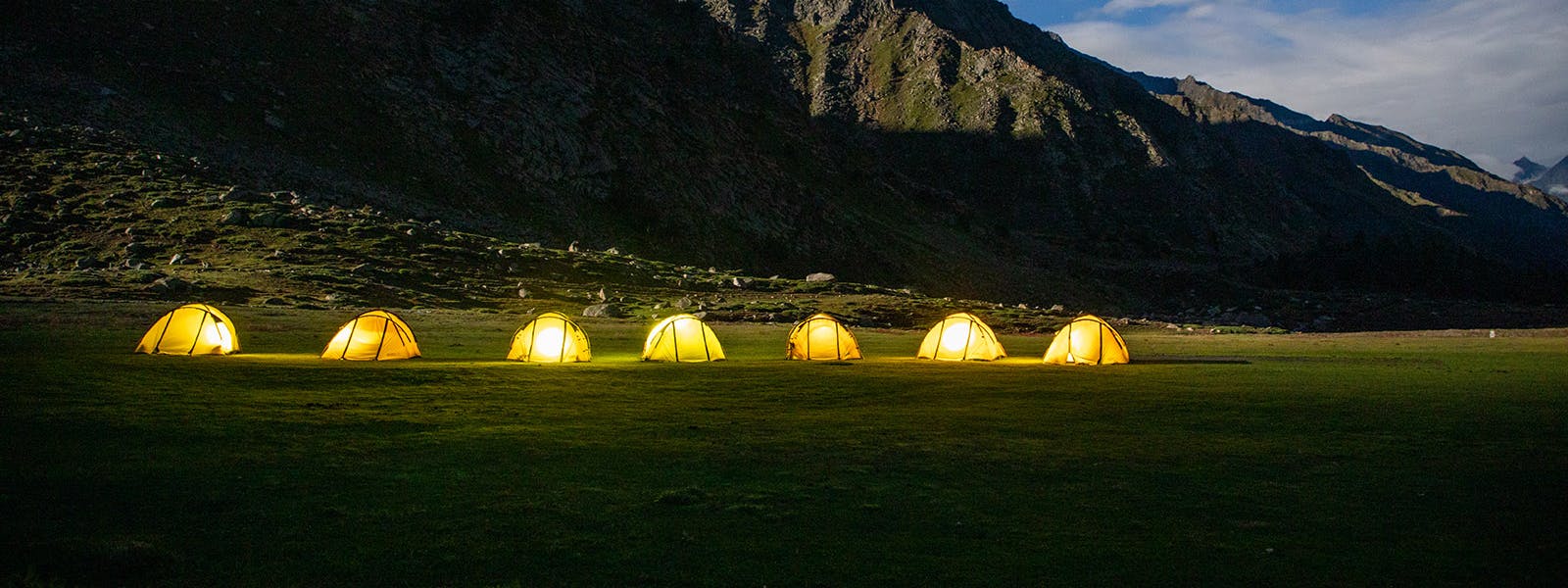The Evolution Of Human Waste Management On Treks
Share this story
The Evolution Of Human Waste Management On Treks
Category Green Trails Indiahikes Impact
By Swathi Chatrapathy
2019-06-06
Today, I’ve chosen a topic that you probably have been a part of if you have trekked with us — our toilets in the mountains and how they evolved.
Before I start, I want to share an interesting number with you.
Did you know that an average human produces around 500 g of human waste everyday? That means in 7 days, one trekker produces around 3.5 kilos of human waste. A batch of 18 trekkers, in 7 days, produces 63 kilos of human waste.
If you continue multiplying by the number of treks and the number of trekkers going to the Himalayas in a year, the amount of human waste rises exponentially!
Why is human waste such a problem?
You must know, that there are many villains in the mountains to hamper a simple process such as decomposition of human waste — we have thin air at high altitude, dreadfully low temperatures, large volumes of human waste, lack of infrastructure, a social stigma attached to human waste management and a disappointing lack of care.
And when human waste doesn’t decompose, it could enter water systems at their source. That’s disastrous for the entire country, given the Himalayas has most of the country’s water sources.
Given all of these obstacles, we’ve been working towards better management of human waste.
I’m writing to you specifically because we need help to better these systems. We have worked on it endlessly and almost hit a dead end. So your thoughts and ideas will really help. You may have used our toilets, you may have used toilets in other countries and national parks. So after reading this mail, please share your ideas with me!
Right away, I’m going to give you a peek into how our toilets have evolved. Given the long history, I’ve made it as story-like as possible. Take a look.
Open defecation — The system that existed
“Much earlier, before Indiahikes started, open defecation was the norm. There were no toilet tents, no pits,” says Arjun Majumdar, the founder of Indiahikes. “Exposed to the sun, the poop would decompose quickly. It wasn’t a problem because we were just a handful of trekkers.” We’re talking about the late 90’s and the early 2000’s here.
“When we started Indiahikes in around 2009, the first few teams did continue to practice the same norm. Back then, in a given season (2-3 months) there were hardly 60 trekkers on the trail. So it was still manageable. However, with the number of trekkers doubling up to around 120 next year, we knew we would have to innovate,” says Arjun.
The first new system that we tried was catholes
Here trekkers would go away from the campsite, take a shovel, dig up a small hole, answer nature’s call and cover it up. “I remember, at one point, we were even asking trekkers to bring their own shovels!’ recollects Sandhya, our co-founder.
The human waste would decompose naturally, and there was no sight or smell. For the number of trekkers back then, this system worked. But this system had a drawback. Not every campsite had good, soft ground for digging. In many places there was only snow and ice. And in some only very hard ground.
Next came our toilet pits
“We would dig deeper pits that would last around a week or two. There would be mud with a shovel for the trekker to cover it up. This was a pretty efficient system and we stuck to it for a long time,” says Arjun.
At the same time as the pits, we designed toilet tents
They were squarish, tall enough for a person to stand in, with a flat roof and with zippers running from the top to the bottom. The privacy that came with the toilet tent, brought about a huge sense of comfort.
The design of our toilet tents. Picture by Gurkirat
But one worry always nagged us. The decomposition process was slow in the mountains. What could we do about it?
It was around 2015 that we had a eureka moment with cocopeat
Cocopeat is a carbon-rich material made of coconut husk. It absorbs the moisture content, contains natural bacteria and speeds up decomposition. It was a wonderful discovery!
“I remember our experiments with cocopeat. It was almost comical. For a month, I made my nieces and nephews poop in a drum everyday, and cover it up with cocopeat. It was a test to see if it would work in the mountains,” says Izzat Yaganagi, who used to head our Green Trails team back then.
As we all know by now, cocopeat worked beautifully, and we stuck to it for good. In the toilet tents, we would provide a heap of cocopeat along with mud. The trekker would do their business, cover it up with cocopeat, and add mud over it.
What we have now — deep, long-lasting pits with cocopeat
“Around 2015-16, trekking grew exponentially. There were so many more trekkers. We suddenly began worrying about the number of pits we would have to dig. Our pits didn’t last more than a week or two, and we didn’t want to dig that many pits in the mountains,” says Sandhya.
This is when the Green Trails team decided to have much deeper pits that would last almost a month. “We have 2-3 pits at each campsite between which we cycle. So the load on the environment is much lesser than digging up too many pits,” says Lakshmi Selvakumaran, the head of our Green Trails team.
This is the system we stick to till date. We have found it to be environmentally-friendly and logistically efficient.
Over time, our toilet tents have evolved too. The structure of the tent is sturdy enough to not fly in strong winds, there are pockets inside to help trekkers keep their things and also provisions to hang organic air fresheners. There are also planks distanced correctly for trekkers to squat. Some of our toilets even have supporting rods to hold onto for better balance.
Some side experiments
We have also experimented with biodegradable corn starch bags (especially on treks like Chadar where digging pits is difficult), wet Indian toilets where water sources are aplenty, western seated toilets with big blue drums, and even bio digester toilets.
But we have found the deep long-lasting pits to be the best for most campsites.
However, I’d still say it’s a work in progress.
Ideally, we would love to have toilets like these in our mountains.
These are toilets in a remote national park in Canada. Our Green Trails head, Lakshmi who was there last week sent us these photos.
They are dry toilets and function much like our deep pits. They’re not only better aesthetically, but there is also a system to drain out the waste from the pits without disturbing the toilet.
But to have such permanent fixtures with efficient drain systems, we’ll need the forest department’s involvement, and a lot of design thinking.
It is what we’ll aim at for the future. And hopefully, our Indian mountains will have such efficient systems soon.
If you have any thoughts around this, drop in a comment. We’d love to hear of any good, scalable toilet design. 🙂
Upcoming Treks
Related Articles
Related Videos
What Happens To Your Poop in the Mountains?
Why Trekkers Must Say No To Wet Wipes
3 Non-negotiable Things To Avoid Carrying On A Trek
Sign up for our much loved Weekly Mailer
We have terrific trekking tips, trek updates and trek talks to look forward to




